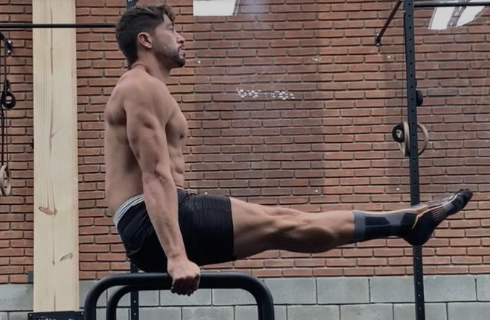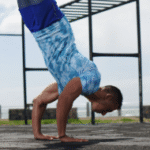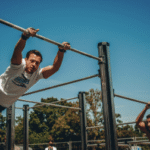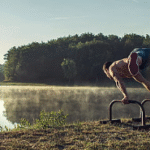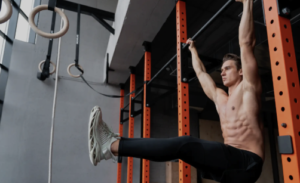
Recovery is just as important as training. Whether you’re a professional athlete, a weekend warrior, or a physical therapist assisting clients, finding the right recovery techniques can significantly impact performance, injury prevention, and overall wellness. Enter contrast therapy, an age-old method with modern therapeutic applications that’s gaining popularity in fitness and rehab circles.
But what exactly is contrast therapy, and how can it help you recover faster and more effectively? This guide will break it down step by step.
What is Contrast Therapy?
Contrast therapy involves alternating between hot and cold treatments to promote recovery and improve your body’s natural healing processes. This method dates back to ancient times, long before saunas or cold plunges became trendy. Cultures around the world—like the Finns with their saunas and the Japanese with their hot springs—have used temperature-based therapies for centuries to enhance physical and mental health.
Today, contrast therapy has become a popular recovery technique among athletes and physical therapy professionals due to its scientifically backed benefits and ease of use.
How Does Contrast Therapy Work?
Contrast therapy alternates between hot and cold treatments, usually in cycles lasting a few minutes each. For example, an athlete might spend 3–5 minutes in a hot tub or sauna, immediately followed by a 1–2-minute immersion in an ice bath or cold plunge. This cycle is often repeated several times in one session.
What Happens to Your Body During Contrast Therapy?
Here’s the science behind it:
- Heat Therapy (e.g., hot tubs, heating pads, saunas) promotes blood vessel dilation, which increases blood flow to muscles and tissues. This helps loosen tight muscles and deliver oxygen and nutrients effectively.
- Cold Therapy (e.g., ice baths, cold plunges, cryotherapy) triggers blood vessel constriction, reducing inflammation, relieving pain, and slowing down nerve impulses that cause muscle soreness.
The alternating process creates a “pumping” effect in your blood vessels, improving circulation, flushing out lactic acid, and accelerating tissue repair.
Benefits of Contrast Therapy for Athletes
Contrast therapy has gained traction among athletes because of its unique ability to address multiple recovery needs at once. Here are some ways it supports physical performance:
- Muscle Recovery – The improved circulation helps remove metabolic waste like lactic acid, which contributes to soreness after intense workouts. Athletes often report feeling refreshed and less fatigued after a session.
- Reduction in Muscle Soreness – Alternating temperatures can reduce delayed-onset muscle soreness (DOMS), allowing athletes to get back to training faster.
- Enhanced Performance – By promoting faster recovery, athletes can optimize their performance during subsequent training sessions or competitions.
- Injury Prevention – Better circulation and reduced inflammation help maintain muscle elasticity and reduce the likelihood of strains and sprains.
Application in Physical Therapy and Rehabilitation
Contrast therapy is more than just a tool for athletes. It’s frequently used as part of treatment plans in physical therapy and rehabilitation settings. Physical therapists often recommend it for patients recovering from:
- Soft tissue injuries (e.g., sprains, strains)
- Surgeries involving tendons or ligaments
- Chronic pain conditions like arthritis
The controlled use of hot and cold therapy helps reduce swelling, manage pain, and promote a faster return to regular activities.
Best Practices for Applying Contrast Therapy
Whether you’re trying it at home or under professional supervision, following best practices ensures you get the full benefits of contrast therapy safely:
- Ideal Temperature Range
- Hot treatments should be between 100–110°F (38–43°C)—comfortable, but not scalding.
- Cold treatments should range from 50–59°F (10–15°C)—cold enough to challenge your body, but not dangerously extreme.
- Cycle Length and Duration – We recommend alternating 2-3 minutes of cold with 10-15 minutes of heat.
- Consistency Matters – To see lasting benefits, incorporate contrast therapy into your recovery routine consistently. Aim for at least one session per week based on your fitness or recovery goals.
- Monitor Your Body – Listen to your body. If you feel lightheaded, overly fatigued, or experience discomfort, stop the session and consult a professional.
Nordic Cycle Contrast Therapy at Calisthenics Club Houston
Contrast therapy is more than just a trendy recovery technique—it’s a science-backed, effective method for enhancing recovery, preventing injuries, and supporting rehabilitation. By alternating between hot and cold treatments, you can improve circulation, reduce inflammation, and optimize performance in ways other methods can’t.
Whether you’re a seasoned athlete, a fitness enthusiast, or just a regular person who has aches and pains after working out, contrast therapy is worth exploring. At Calisthenics Club Houston, we have state-of-the-art cold plunge tub and sauna that keep the temperatures where they need to be for you to get the maximum benefits from contrast therapy.
Are you ready to take your recovery to the next level? Sign up for an Intro Nordic Cycle for a discounted rate and give it a try!
Route
Calisthenics Gym Houston Functional Bodyweight Training
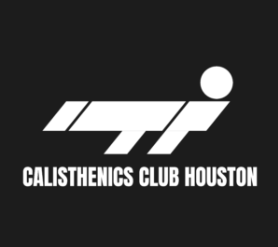
Secondary phone: (346) 483-3195
Email: info@calisthenicsclubhouston.com
URL: https://calisthenicsclubhouston.com/
Monday 6:00 AM - 7:00 PM Tuesday 6:00 AM - 7:00 PM Open now Wednesday 6:00 AM - 7:00 PM Thursday 6:00 AM - 7:00 PM Friday 12:00 PM - 6:30 PM Saturday 9:45 AM - 12:00 PM Sunday 3:00 PM - 5:00 PM

